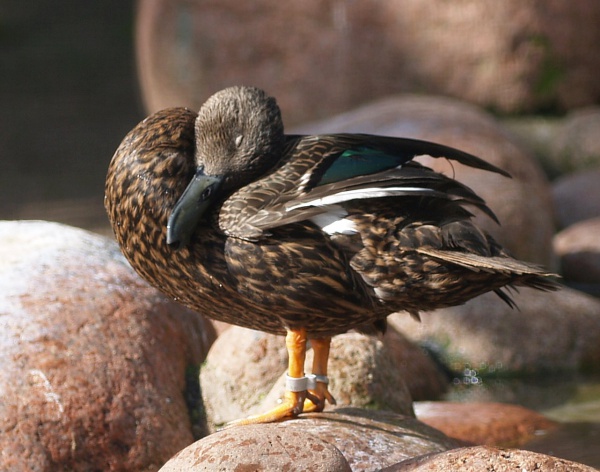Facts About Meller's duck
Meller's duck is a distinctive dabbling duck native to eastern Madagascar. Historically, there was a population in Mauritius; however, it is now endangered due to habitat loss and competition from feral domestic ducks. This species is named after the botanist Charles James Meller, and its scientific name originates from the Ancient Greek word for duck.
In terms of appearance, Meller's duck resembles a large female mallard but lacks the distinctive eyebrow stripe. It features striking green speculum feathers bordered with white. Compared to a mallard, Meller's duck is larger and has a dark brown body with pale feather edges.
Behaviorally, Meller's duck breeds throughout the year in Madagascar and is known for its territorial nature during the breeding season.
Unfortunately, Meller's duck is classified as endangered. Conservation efforts have been complicated by misunderstandings about its relationship to the mallard. Despite its rather plain coloration and territorial habits, Meller's duck breeds readily in captivity. There are captive breeding programs in place, though it remains uncommon in zoos.
For a long time, Meller's duck was thought to be a color variation of the mallard. However, behavioral and genetic studies have confirmed it as a distinct species within the mallard group. Its closest relative is believed to be the yellow-billed duck, though the precise relationships within the mallard family are still not entirely clear.
